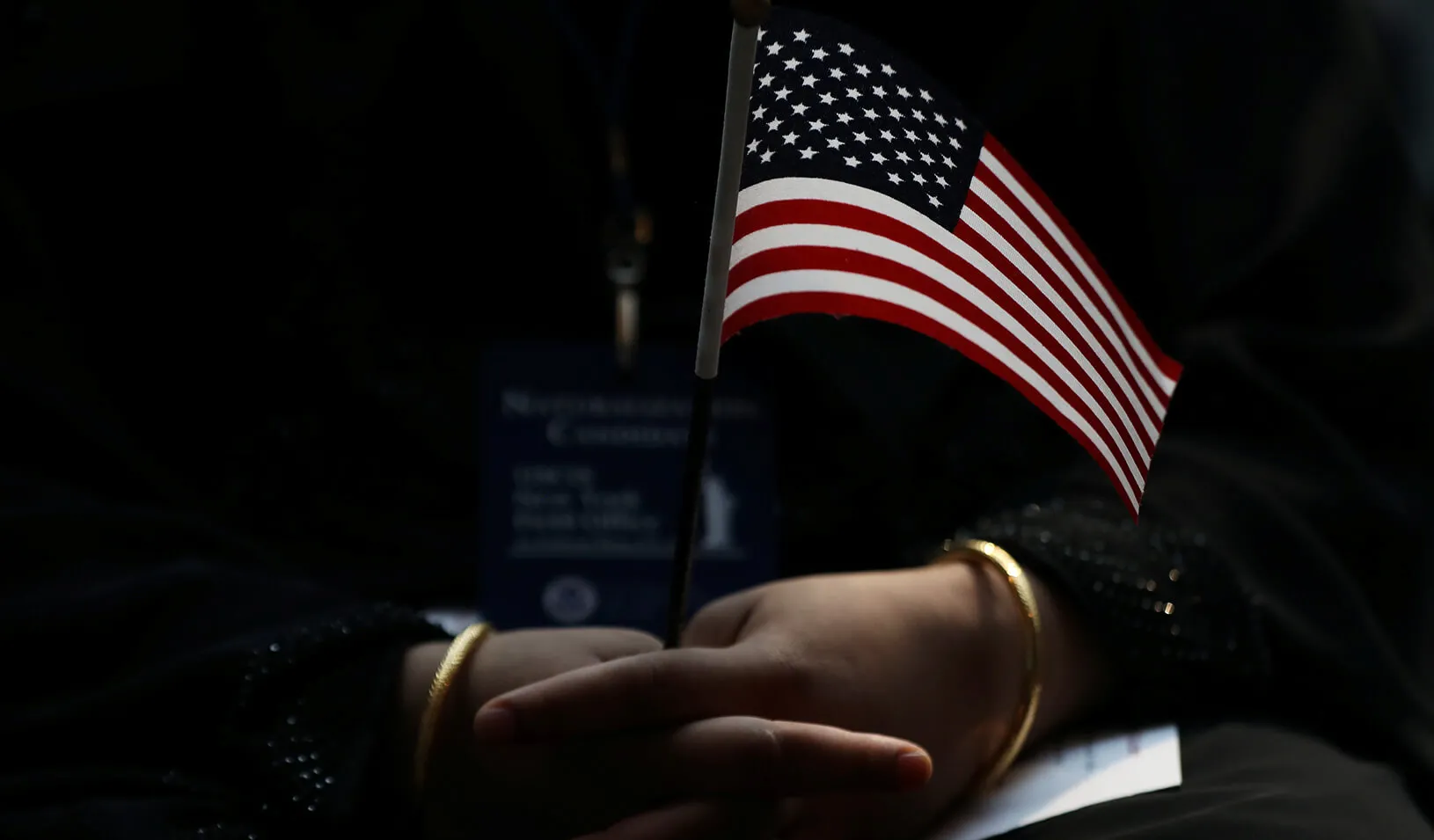How Well Do Refugees Integrate into American Society?
Nationality, education level, and other factors are linked to resettled refugees’ likelihood of becoming citizens.
June 12, 2019

Refugee status “is not necessarily an obstacle to naturalization,” says Stanford scholar Jens Hainmueller. His research shows how well people integrate into U.S. society. | Reuters/Shannon Stapleton
When refugees enter the United States through its resettlement program, government-funded agencies support their transition and check whether they have found jobs after a few months. But beyond that, little is known about the new immigrants’ long-term success.
“There’s a lot of attention on the refugee resettlement program nowadays, but there’s not a lot of systematic evidence,” says Jens Hainmueller, a professor by courtesy at Stanford Graduate School of Business and faculty codirector of the Immigration Policy Lab (IPL), an international collaboration.
In a recent study, Hainmueller and his IPL colleagues Duncan Lawrence, Jeremy Ferwerda, and Jeremy Weinstein, as well as U.S. Department of Homeland Security economist Nadwa Mossaad, investigated how refugees fared 5 to 15 years after arrival. The researchers cross-referenced refugee arrival data with records of naturalization — becoming a U.S. citizen — to gauge integration into society. They found that resettled refugees obtained citizenship more quickly than other immigrants did.
The results suggest that refugee status “is not necessarily an obstacle to naturalization,” Hainmueller says.
However, refugees’ naturalization rates varied depending on factors such as education level and country of origin. The study might provide a first step toward identifying groups that need assistance. “Some of them are doing much better than others,” Hainmueller says.
A Marker of Integration
People fleeing violence or persecution can enter the U.S. in two ways: through its resettlement program or by applying for asylum at the border. Hainmueller’s team focused on the first path. In this case, people typically are living in a refugee camp outside their home country. After extensive background checks, they are sent to specific locations in the U.S.; five years later, they can apply for citizenship.
Tracking refugees’ outcomes could clarify the program’s benefits and costs, Hainmueller says. For instance, policymakers want to know how often refugees find jobs, use social services, and rely on welfare. Naturalization is a good marker of integration because it suggests that the person is committed to staying and has fulfilled criteria such as speaking sufficient English. Becoming a citizen might also improve integration by providing an advantage in the job market.
Hainmueller’s team examined data from the Department of Homeland Security on about 380,000 refugees who entered the U.S. from 2000 to 2010. The researchers compared the refugees’ naturalization rates to those of 8.3 million immigrants who entered via non-refugee pathways — for instance, on study or work visas.
Six years after becoming permanent residents, 29% of non-refugee immigrants had obtained U.S. citizenship. Among refugees, that figure was 45%. One might have assumed that refugees would be at a disadvantage because they have suffered trauma and likely arrive with fewer assets. “But it seems like the refugees are actually doing quite well on that metric,” Hainmueller says.
Striking Differences
The researchers then considered demographic factors. They found, for instance, that college-educated refugees were 26% more likely to naturalize than uneducated refugees were. Surprisingly, having a U.S. tie — a family member or friend in the country who had agreed to help the refugee settle in — didn’t make much difference. Perhaps those connections assist with the early transition but not long-term integration, Hainmueller speculates.
Striking gaps emerged when comparing refugees from different countries. Obtaining citizenship was most common among people from Iraq, Iran, and Somalia and least common among those from Burma, Ukraine, Liberia, and Vietnam. Iraqis, for example, were about 40 percentage points more likely than Burmese people to become citizens. “It’s a pretty massive difference,” Hainmueller says.
The reason for this gap isn’t clear. Commonly cited explanations for higher naturalization rates include coming from a very unstable home country — to which one is unlikely to return — or from a more similar culture. But neither factor seemed to explain the patterns seen here.
Finally, the team analyzed the locations where refugees settled. Naturalization was higher in urban areas, which probably provide more immigrant support services. Refugees also were more likely to become citizens in counties with a higher fraction of people from their home country, perhaps because compatriots helped them with applications. And areas with lower unemployment rates also tended to have higher naturalization rates. One possible reason is that having a job facilitates integration, Hainmueller says.
A Political Question
It’s too early to recommend specific policies based on these results, Hainmueller says. The links are correlations, and more research is needed to show cause and effect. But further evidence could eventually help policymakers make decisions. For example, they might opt to admit more refugees from countries with higher naturalization rates or, conversely, provide more assistance to refugees from countries with lower rates. More data also could help agencies determine where refugees should be resettled to improve their chances of success.
The study’s results do not apply to certain hot-button political topics. Because the research focused on the resettlement program, the data did not include people who traveled to the border to claim asylum. And the study doesn’t directly support or undermine the Trump administration’s controversial decision to drastically cut the number of refugees admitted per year. What role the United States wants to play in the world’s refugee crisis, Hainmueller says, is “a purely political question.”
For media inquiries, visit the Newsroom.
Explore More

Do First-Gen College Grads Face Bias in the Job Market?

Fighting Transphobia in 10 Minutes



